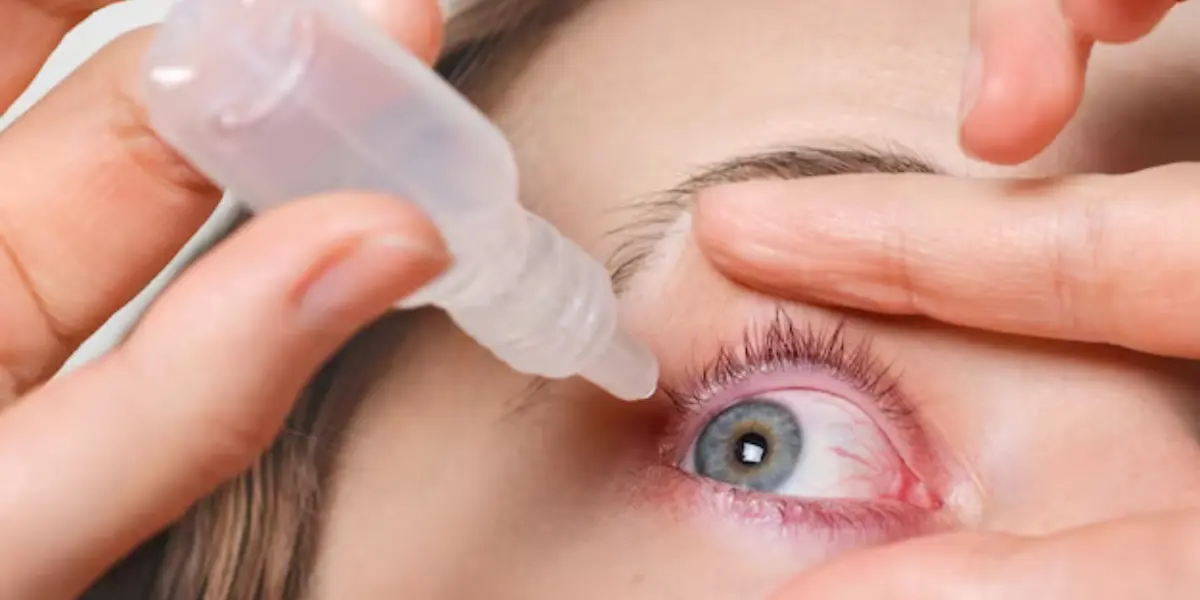Conjunctivitis is an inflammation of the conjunctiva without presuming its infectious origin or not. often considered as a minor and self-limiting ophthalmological pathology, It should not be neglected (risk of visual after-effects).
The conjunctiva is a thin, clear, lubricating tissue that covers the white part of the eye and lines the inside of the eyelid. When irritated by infection or allergies, the small blood vessels are more visible, the eyes are red and swollen, and sometimes they have a sticky discharge.
Some types of conjunctivitis are very contagious. Their origin can be viral, bacterial, allergic, or irritant. Vision is usually not affected and a common symptom is a red, watery eye.
Pink Eye (Conjunctivitis): Symptoms, Causes, Diagnosis, Tests, Prevention, Management And Treatment
Red eye is a symptom found in a large number of eye diseases, from the most benign to the most serious. The redness is generally due to the dilation of the blood vessels of the conjunctiva, a thin membrane covering the front part of the eye.

We then speak of conjunctivitis. Its treatment is based on the administration of eye drops, the composition of which varies depending on the cause of the conjunctivitis.
Conjunctivitis caused by bacteria or viruses is spread very easily from person to person. Transmission is done by: close personal contact, as touching or shaking hands. the air when coughing and sneezing.
Touch an object or surface that contains germs, then touch your eyes before washing your hands. Oculogenital contamination is linked either to passage through the genital tract in infants or to direct contact with fingers.
What Are The Symptoms Of Conjunctivitis?
Different types of conjunctivitis may be accomplished by slightly different symptoms:
- Swelling of the conjunctiva with increased tear production.
- Itchy eyes, gritty feeling, urge to rub your eyes, feeling like there is a foreign body in one or both eyes.
- Discharge ( pus or mucus) in one or both eyes that crusts overnight and may cause the eyelids to stick together when you wake up
- The symptoms of conjunctivitis are redness associated or not with tingling, itching, swelling of the eyelids, pain, a flow of tears or yellowish pus which can temporarily seal the eyelids upon waking, or even a loss of vision. Sometimes there is also decreased vision and intolerance to light. For more information, consult your doctor
Types And Causes Of Conjunctivitis
Although there are many causes of conjunctivitis, viral, allergic, and bacterial etiology are the most common.
Viral Conjunctivitis
very contagious, viral conjunctivitis is the most common conjunctivitis (95% of cases). The viruses involved are part of the adenovirus or herpes virus family and eruptive viruses ( measles, mumps. rubella) present in early childhood. Viral conjunctivitis presents the same symptoms as bacterial forms but the secretions are more serious than purulent. However, depending on the cause of viral conjunctivitis, some patients may experience additional symptoms.
Adenovirus
Adenoviral infection is highly contagious, often bilateral, noisy with foreign body sensation( corneal involvement), chemosis, and photophobia may be present. Herpes (HSV): Particularly affecting those with an atopic or autoimmune background, HSV can cause disease in any layer of the eye, and common manifestations include blepharitis, follicular conjunctivitis, keratitis, and keratouveitis.
Enterovirus
it manifests itself in the form of epidemics of acute hemorrhagic conjunctivitis with a sudden onset
Bacterial Conjunctivitis
In bacterial conjunctivitis, one eye is generally affected, then quite often the other eye is affected with purulent or mucopurulent secretions which tend to stick to the eyelashes
many micro-organisms are likely to be responsible for bacterial conjunctivitis including:
Staphylococcus aureus, Streptococcus pneumoniae, Haemophilus influenzae, more rarely, Neisseria gonorrhea, and Chlamydia trachomatis.
Allergic Conjunctivitis
Allergic conjunctivitis is associated with itching, chemosis, and swelling of the eyelids and most often occurs following exposure to pollen or other allergens
How Is Pink Eye Diagnosed?
It is usually not difficult for a healthcare professional to diagnose conjunctivitis based on the patient’s history, symptoms, and an eye exam. although the symptoms may be the same regardless of the cause, there are few signs to help determine whether the pink eye is a bacterial or viral infection( an acuity test may be done to see if vision has changed. ) or been affected)
How Can I Prevent Spreading A Pink Eye Infection?
Things you can do include:
- Wash your hands often with soap and water
- Avoid touching your eyes with unwanted hands as much as possible
- Do not share towels or tissues
- Wash and change pillowcases frequently
- Try not to share cosmetic products with other people and replace them regularly
- Handle and clean contact lenses properly
How To Treat Conjunctivitis
Treatment of viral or bacterial conjunctivitis should include patient education to reduce the rate of transmission.

Bacterial Conjunctivitis
Although usually self-limiting, it can be treated to help reduce the duration of symptoms. The treatment of bacterial conjunctivitis is based on antibiotics (ointment or eye drops) and varies depending on the microbial agent responsible
Viral Conjunctivitis
Most of the time, it is caused by the same viruses that cause the common cold, symptoms are usually mild and go away on their own in 7 to 10 days, treatment should target symptomatic relief with cold compresses and artificial tears.
Allergic Conjunctivitis
Treatment consists of avoidance of allergens, artificial tears, cold compresses, saline, and antihistamines to stop inflammation.
Early diagnosis and treatment can help relieve discomfort and limit its spread.
Takeaway
Conjunctivitis caused by climatic influence, such as wind or sun, as well as allergic conjunctivitis generally does not cause complications. On the other hand, infectious conjunctivitis, whether of bacterial or viral origin, must be treated quickly to avoid complications.
For a few months after having pink eyes, you may experience a strange body sensation (like grit) or redness in the eye sporadically. After a while, it usually disappears. In these cases, using artificial tears and checking the progress is advisable.
Most conjunctivitis resolves spontaneously within a few weeks. Even with treatment, worsening may occur eye may be affected, viral conjunctivitis takes its clinical course (usually between 2 and 4 weeks) and medications help reduce symptoms, but do not reduce the time it takes for symptoms to resolve.
References:
- Centers for Disease Control and Prevention. Conjunctivitis (Pink Eye). (https://www.cdc.gov/conjunctivitis/) Accessed 8/22/2022.
- Conjunctivitis: Overview. (2018).
http://www.ncbi.nlm.nih.gov/pubmedhealth/PMH0072497/ - Conjunctivitis (pink eye). (n.d.).
https://www.aoa.org/healthy-eyes/eye-and-vision-conditions/conjunctivitis?sso=y